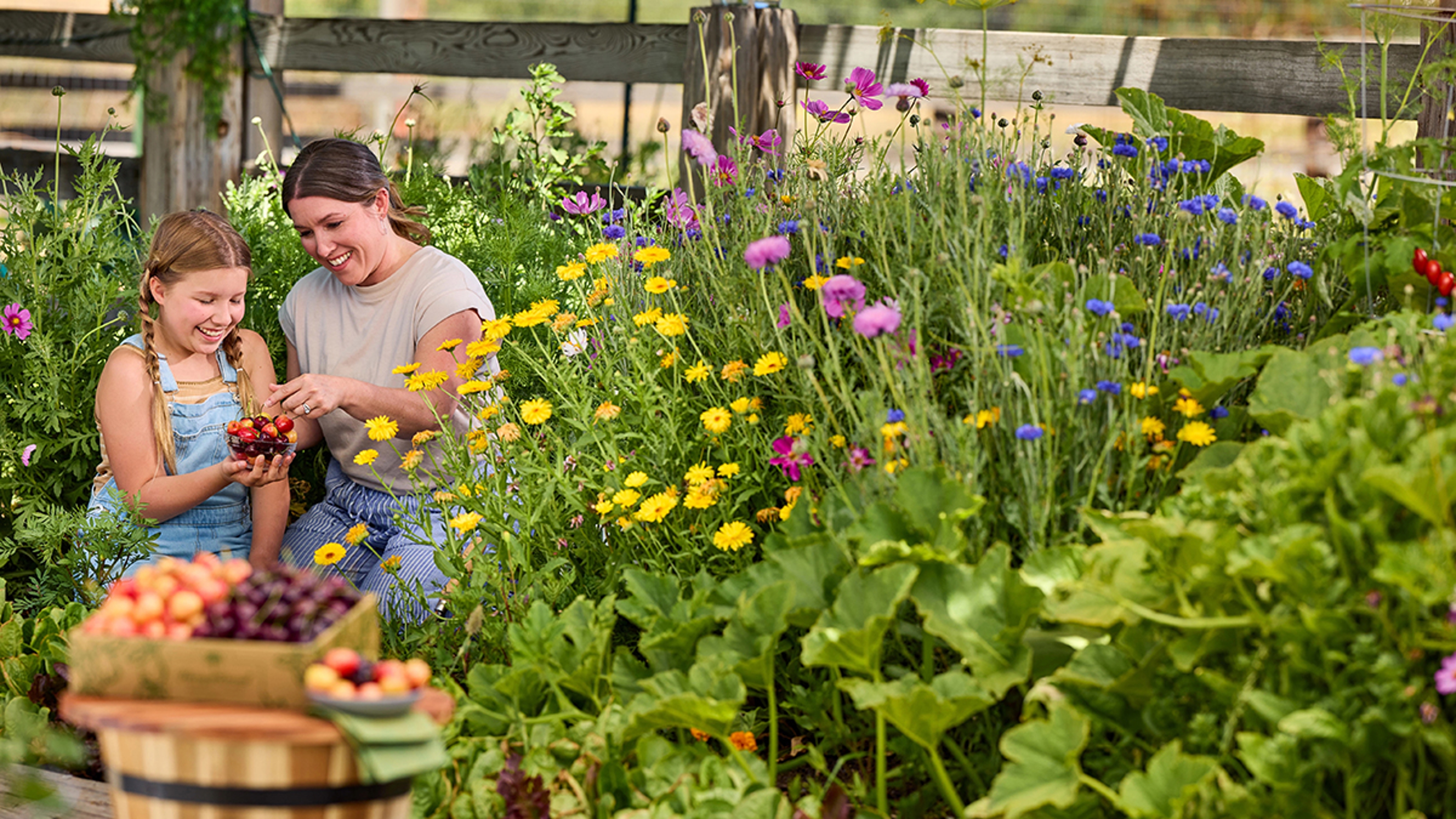16 Simple Tips to Live More Sustainably
Doing any of these will make a difference.
Apr 10, 2025
Despite what you may stumble upon doom scrolling, small changes can make a big impact. Here are some new and classic sustainable living tips to kick off a more purpose-driven year.
Whether you want to reduce your consumption of red meat, make eco-friendly swaps, or support companies with clear commitments to sustainability, the following tips can be incorporated one at a time for compounding change by the end of the year.
How to eat more sustainably
1. Learn how your seafood is caught
Fifty-eight percent of North American seafood consumers agreed that, to protect the ocean, seafood must come from only sustainable sources. One way to do that is to look for the MSC label when buying your seafood. Supporting MSC-certified sustainable fisheries is as easy as buying a can of tuna.
Learn more about what it means for seafood to be certified sustainable by MSC, and how the MSC blue fish label is making waves in the seafood and commercial fishing industries.

2. Swap farmed red meat for wild-caught seafood
Farmed animal protein has a higher carbon footprint than many other food options; can contribute to the pollution of groundwater, air, and soil; and consumes an extraordinary amount of energy and water.
Swapping wild-caught seafood options for farmed meat in one or two meals a week can further reduce your carbon footprint. Fishing for wild seafood has a significantly lower environmental impact than the production of other land-based animal proteins.
3. Cook more at home to reduce food waste
Did you know that cooking your own meals can be an eco-friendlier choice? When you cook your own meals, you choose where and how your ingredients are sourced, and you can also control things like packaging, plastic waste, and portion size, helping to reduce the over 168 million tons of food waste produced in North America annually.
How to shop more sustainably
4. Bring reusable bags to the store/reduce the amount of plastic while shopping
Worldwide, a trillion single-use plastic bags are used each year, with only a small fraction being recycled and the majority ending up in landfills or oceans. A simple way to avoid contributing to this number is to bring your own bags to the store.
5. Look for and purchase certified sustainable products
There are several certification programs and associated eco-labels out there to help you identify products that match your ethos, like Fairtrade Certified or Non-GMO Project Verified.
If you are uncertain about the validity or accuracy of a sustainability claim or logo, take a few minutes to do a little research.

6. Shop seasonally and regionally, when possible
Recent data suggests that incorporating seasonal foods into your diet can support the health of the planet. This may refer to global seasonality—where food is produced in-season but consumed elsewhere in the world—or local seasonality—where the food is harvested and consumed in the same location during the natural growing season.
7. Make the switch to eco-friendlier personal hygiene and beauty products
When looking for personal care products, prioritize ones that have been sourced responsibly and ethically, use certified sustainable or eco-friendly packaging, and avoid any harsh or damaging ingredients or microplastics.
8. Focus on “slow” fashion options
Clothes should last longer than a season and should absolutely cost more than a candy bar. The desire for new, trendy, and seasonal clothing items from the growing fast fashion industry can have both severe environmental and ethical implications.
A tip from MSC’s Canadian Marketing Manager, an avid thrifter: “Think of thrifting like a treasure hunt. You can find most clothing items in a thrift store instead of buying new. Just get in the habit of shopping out of season to find the best selection.”
9. Prioritize alternative methods of consumption
Don’t be afraid to explore alternative options including thrifting, swapping, or bartering. There are several internet-based groups dedicated to “Buy Nothing” communities in which people can offer and receive items at no cost while also reducing their overall waste. There is also no shortage of social media-based sellers offering a wide array of pre-loved items.
How to travel more sustainably
10. Use public transportation
It’s no big secret that public transportation and other car alternatives help to reduce overall energy consumption and damaging carbon emissions. Whether you’re commuting in your hometown or visiting a new locale – get to know the Metro! Subways, buses, and trains all give you the time to sit back and read, write, or even craft. Depending on how long your commute is, you may be able to knit a new sweater by the time you reach your stop.
Plus, more single-rider alternatives including bike and electric scooter rentals are becoming available in major cities across North America.
Can’t escape the car? Try finding coworkers with whom you can carpool to reduce your overall environmental impact.
Finally, don’t forget the simple and powerful act of walking. There’s no better way to see a new city or part of town you normally drive through from a different slower perspective.
How to live more sustainably
11. Don’t forget about your digital carbon footprint.
While many people have migrated over to digital-only bills and other forms of communication, it’s important to remember that there is a carbon footprint of digital items, too. Cooling server farms, powering devices, and producing new technology all require energy inputs and have a carbon output.
Make sure you’re properly disposing of your unusable electronics and small appliances.
12. Grow your own fruits and vegetables
Not just for homeowners, a shocking amount of food can be grown on a balcony or windowsill!
When embarking on a home gardening project, keep seasonality and regionality in mind. A crop that needs a hot, dry environment may not naturally do well in the Northeast. Find a local farmer’s co-op or home improvement store, as they may carry locally relevant seed varieties, as well as the tools necessary to build that mini garden.

13. Swap out your single-use items at home
Some simple swaps include using reusable containers instead of aluminum foil, plastic zipper bags, or cling wrap when packing leftovers. Silicone baking mats are also a great alternative to parchment paper. Purchase a set of absorbent kitchen cleaning towels and sponges to replace paper towels while cleaning.
Think of creative ways to repurpose single-use items to extend their life in your home. For example, if you have little ones, try using the tubes from paper products to create fun DIY crafts.
14. Bring a reusable mug
Coffee cups are usually made of a cardboard-plastic mixture for insulation purposes, which is great for keeping your drink warm but less great for the environment. Because the material is a composite, many coffee cups cannot be recycled and end up in a landfill.
It’s time to invest in a reusable thermos (which you can definitely find second-hand!)
15. Repair instead of toss
Online videos are here to help! Learn simple clothes-mending techniques, buy a basic set of tools, and you’ll have the power at your fingertips to potentially fix an item instead of sending it to a landfill.
16. Perfection is not necessary
Leave perfection at the door and just do what you can when you can. Small changes, label awareness, and a little creativity go a long way.
Ask your local grocer for more of the items you want but cannot find (e.g. certified sustainable seafood options, fair trade spices, zero waste products). By starting these conversations and preferentially spending on products and companies that are committed to sustainability, ethics, and planetary well-being, you are kickstarting the change you wish to see.












